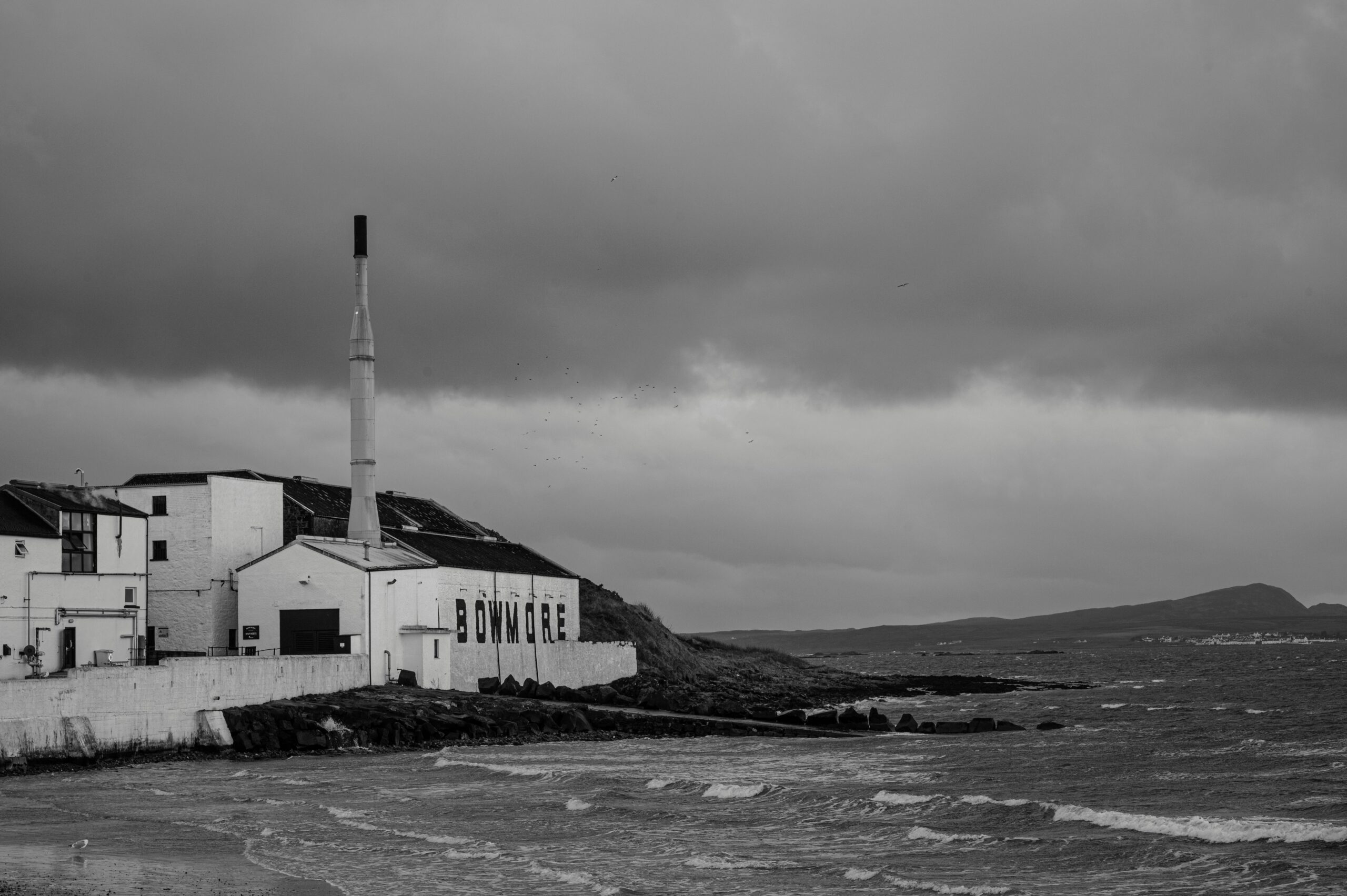Islay whisky is experiencing a boom. This year will see the Hebridean island’s tenth single malt distillery open – Port Ellen.
Technically, it is being reopened after the original was closed in 1983 and later demolished. The project was hailed as vital for the island’s economy and whisky-making heritage when plans were passed some years ago.
Since then, several other projects have received planning permission approval, which could potentially take the number of Islay whisky distilleries up to 14.
And this has started to cause concern amongst local people, known as Ileachs, and those within the wider whisky community.
This concern was heightened with the news that Ardnahoe distillery has closed its award-winning café, citing the current economic climate hitting the hospitality sector hard. A worrying sign perhaps, given that Ardnahoe only opened in 2019.
Has Islay bitten off more than it can chew?
All about Islay
Islay is known as ‘The Queen of the Hebrides’ and is the southernmost island in the Hebridean chain, which sit off the west coast of Scotland. It is the eighth largest island in the UK and fifth largest in Scotland, covering almost 240 square miles.
The name is thought to derive from Ilea, an Old Norse word for island. Many names in the Hebrides have been influenced by the Vikings, who swept down through the chain to Ireland.
Islay whisky is famous for its peated single malt and is currently home to nine distilleries: Ardbeg, Ardnahoe, Bowmore, Bruichladdich, Bunnahabhain, Caol Ila, Kilchoman, Lagavulin, and Laphroaig. As mentioned, a tenth is on the way and ready to begin production during 2024.
Islay tourism
Whisky and tourism are two of Islay’s biggest drawcards. Whisky fans flock from around the globe to visit on their own personal pilgrimages, especially during the week-long Feis Ile festival in Spring.
Herein lies the problem – the annual festival sees the island’s 3,000-person population quadruple for 10 days.
This presents somewhat of a double-edged sword. The boost to the island’s economy is massive, especially as Scottish island populations are falling dramatically according to the 2021 census. But local infrastructure and amenities simply cannot cope with the sudden influx.
A well-documented dispute between CalMac ferries and distillers has impacted on services for freight – most barley, barrels and equipment must be shipped in, and whisky shipped out for maturation or bottling on the mainland.
But regular passengers and tourists share the same services, which have become sporadic and expensive due to the dispute. There are direct flights to and from Glasgow each day also, but the small propellor plane will not fly in bad weather.
And once on the island, other issues come to the fore. Many of the roads are single track and cannot deal with any volume of traffic. There is a limited bus service that caters for locals and just three taxi firms.
From experience, getting a ride to another part of Islay can be tricky and needs good planning. Hitchhiking or walking are often the only options.
Accommodation, retail, and restaurants have all been limited in the past and are improving, but Feis Ile numbers push these beyond bursting point every year.
The peat problem
And then there is the issue of peat – the fuel source that creates the iconic smoky flavours found in Islay single malt whiskies. There has been much debate over the last couple of years regarding the harvesting and use of peat.
The UK has now banned it as an ingredient in garden centre compost and vital habitats are being more closely managed.
Peat has been traditionally used across Scotland for centuries, especially before modern alternatives were readily available. It was the main fuel burned to heat homes, cook food, and dry barley after the malting process.
Peat bogs are the most carbon-rich environments on earth and one of the most effective for storing it.
Therefore, harvesting and burning peat has a negative impact on all fronts – it destroys valuable ancient landscapes and wildlife habitats, and releases carbon back into the atmosphere. Peat does regenerate itself but at a painfully slow rate – just 1mm per year.
The future for Islay
So where does this leave the Islay distilleries, which are synonymous with the peated smoky style of whisky?
The Scotch Whisky Association is aiding distillers to harvest and burn peat in more sustainable ways, while remaining on track to achieve tough Scotch whisky industry targets to achieve net zero by 2040.
There is an increasing belief that if managed correctly then environmental impacts can be severely reduced and minimised.
Maybe the craft and artisanal distillers that have popped up during the last decade are pointing the way? Some are using alternatives to peat, such as heather and juniper twigs, to create smoky and savoury aromas and flavours.
Only time will tell how this will evolve and if Islay has reached saturation point for number of distilleries and amount of whisky production. One thing is for sure – the smoky flavours of Islay whisky, whether you love or hate them, seem here to stay.




